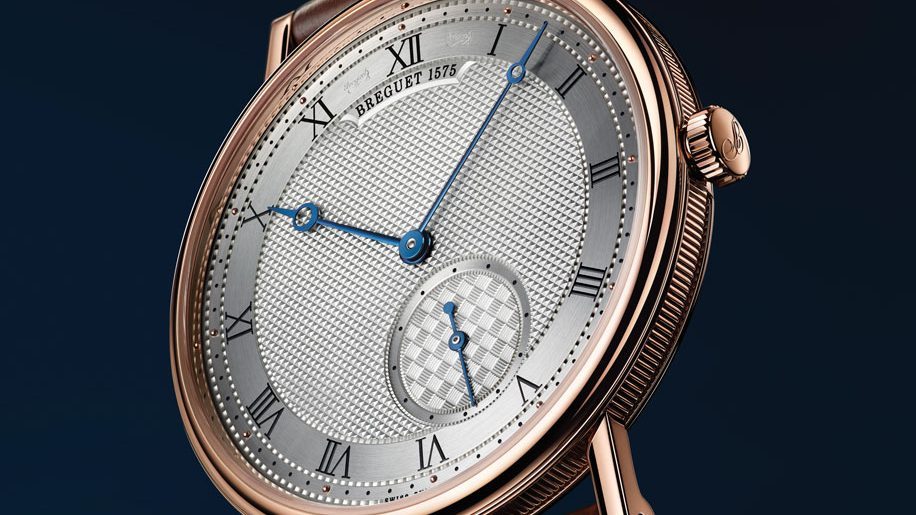
Timothy Barber explains the enduring appeal of Breguet, which has been making exquisite Swiss timepieces since the 18th century.
In Swiss watchmaking, there’s an obvious “big three”– the historical brands that tend to dominate any discussion around the top tier of horological prestige.
Patek Philippe, owned by the Sterns, is known as much for the nosebleed prices its pieces fetch at auctions as for its contemporary watches – in November, a 1940s steel Patek became the most expensive wristwatch ever sold, going for just shy of £9 million at Phillips auctioneers in Geneva.
Audemars Piguet, still owned by the families of its 19th-century founders, is known for its octagonal Royal Oak wristwatch and countless hyper-complex masterpieces.
Vacheron Constantin, founded in 1755 – making it the oldest continually operating watch brand in the world – last year produced the most complicated watch ever made, a pocket timepiece with no fewer than 57 complications.
Somehow, Breguet – the marque carrying the name of the undisputed greatest watchmaker in history, Abraham-Louis Breguet (1747-1823) – exists slightly to one side of these. It is less well known and less understood. But it really shouldn’t be.
Like the others, it matches an august history with a stupendous level of modern mastery and innovation; like them, every part of its watches is made in-house, at its factory in the Jura mountains; and like them, too, once you are familiar with the style, its watches are instantly recognisable, with an aesthetic that draws heavily on those of its founder.
At its factory, almost an entire floor is given over to the art of “guillochage” – the engine-turned engraving style that adorns the dials of its watches. The new Classique 7147, one of the most exquisitely executed dress watches released last year, is a fine example of this, and demonstrates other regular Breguet tropes, such as the “coin edge” knurling of the case and angular lugs.
In fact, the Breguet name crops up regularly in descriptions of other brands’ watches, via elements associated with its founder. “Breguet hands” are those with small circles near the tip, often found on classical watches (including the 7147). “Breguet numerals” are a style of serif font found in the new ladies’ Classique Phase de Lune Dame 9088 – used on the dials of everyone from Patek Philippe to Seiko. The “Breguet overcoil” is a formation for a watch movement’s hairspring used almost universally in watchmaking.
Abraham-Louis, a Swiss man who worked largely in Paris and became part of the fabric of French society in the post-Revolutionary era, was the most famous watchmaker of his day and arguably the most inventive to have ever lived. He counted European royalty among his clients, spending years developing a spectacularly complex watch commissioned for Marie Antoinette but completed long after her execution. Victor Hugo, William Thackeray and Alexandre Dumas referenced him in literature as embodying the height of horological and scientific art. His contributions to the craft include the tourbillon escapement, the perpetually rotating device beloved of top-flight watchmakers. The firm today produces more tourbillon-equipped watches than anyone else.
Still, Breguet remains more enigmatic than its peers – in some ways because it has been designed to be. Owned by the Swatch Group, which also has Omega, Longines and Blancpain on its roster, Breguet became the personal project of the conglomerate’s founder, Nicholas Hayek. His formation of the group in the 1980s, powered by the success of the Swatch watch, is credited with saving Swiss watchmaking from the quartz-era doldrums and driving its full-scale revival.
Breguet, acquired in 1999 when it was underfunded and floundering, was to be the crown jewel; to justify the name, it would have to produce watches that could be seen as heirs to those made by its namesake – something it had not done for several decades. In fact, in the mid-20th century, the Breguet name was better associated with an aircraft maker founded by one of Abraham-Louis’s descendants.
The job of turning the firm from a spent shell to a powerhouse has been carried out with extreme assiduousness and care; the achievement has been remarkable. Hayek’s mission to revive the genius of Abraham-Louis has born fruit in various pioneering technologies, from the use of silicon components to high-power magnets for shock absorption.
Still, that alone wouldn’t be enough. Breguet watches are simply, in all their ultra-classical finery, exceptional timepieces that are the match of any brand in the business. In my mind, the big three should very much be the big four.
Timothy Barber is The Telegraph’s watch editor.












